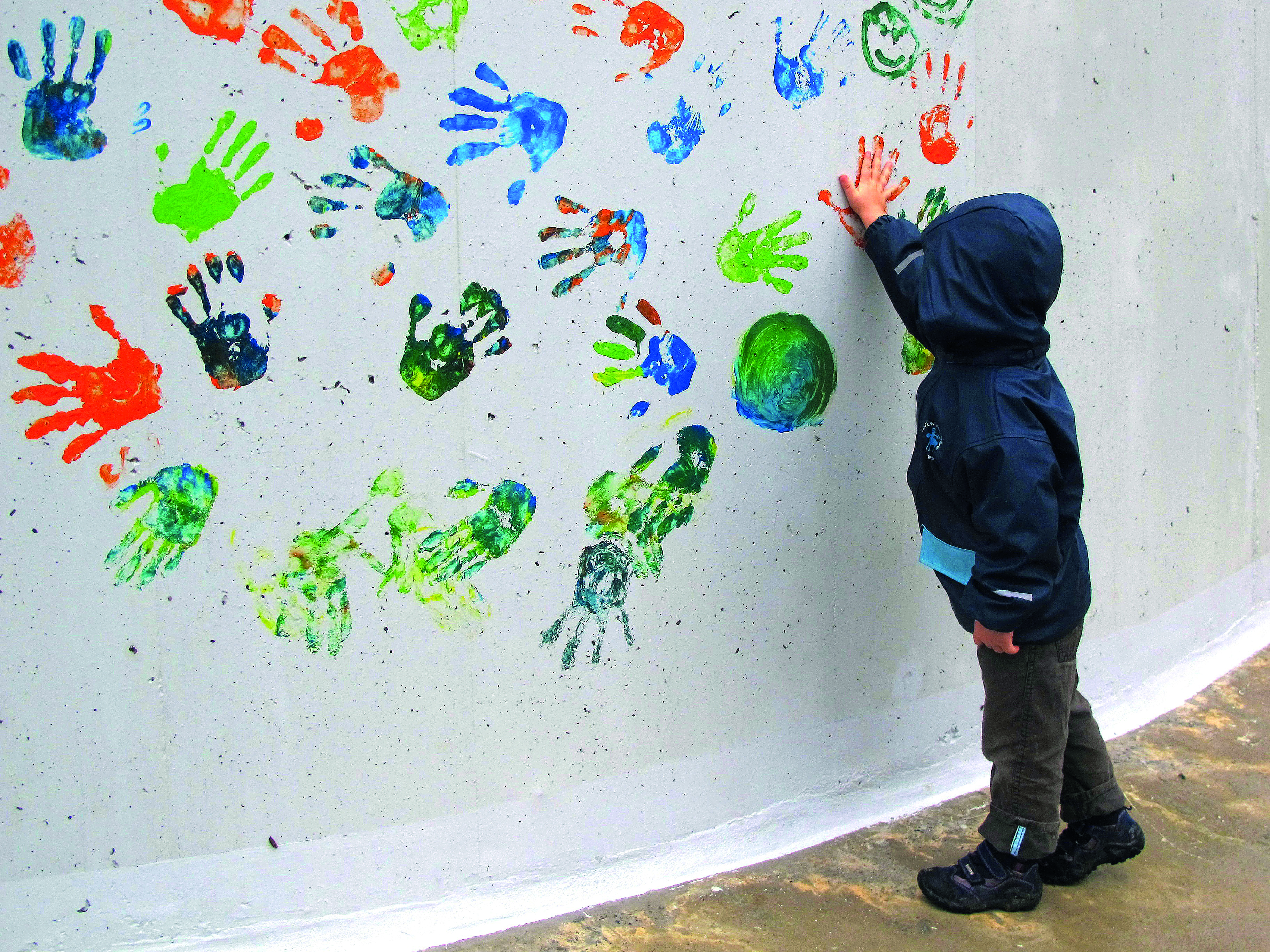
Walls are a much underrated and underused resource for promoting physical activity, mainly because they are often covered up with ‘stuff’, or furniture is in the way. But – like floors – they are always there. They are free to access, familiar to children, and, in the outdoor environment may be revisited continually over many years.
IN AND OUT
Walls are very effective for supporting overall strength, balance and co-ordination from early on.
Inside, children may start off feeling the difference in texture between plaster, cardboard, paper or paint, stretching up to touch something interesting or exploring the difference between the wall and skirting board. Children love to poke around in corners. Many are measured on a wall as they grow.
Outdoors, walls may be used to hide behind, peep around, walk along, jump down from. They may be made of brick, wood, metal or plastic, be straight or curved, high or low, support plants or be clear and smooth.
HOW TO USE WALLS TO SUPPORT PHYSICAL DEVELOPMENT
Inside:
- Ensure you have a clean, clear wall space to offer children.
- Stick different materials at different heights on the wall and invite children to stretch up and remove them.
- Ask children to ‘clean’ the wall with a large sponge. Use both hands together, then right/left separately. Encourage them to make expansive movements that strengthen the shoulder girdle, wrists and hands. Move up/down and side to side, bending knees and pushing back up.
- Use a fluffy duster on a stick to get as high as possible, on tiptoes. Use one hand then the other.
- Cover a wall with lining paper. Paint with big brushes, making strokes as wide/high as possible.
Outside:
- Determine the best walls for climbing, balancing and jumping down from.
- Thorough exploration and investigation make a useful inventory to share with all.

AS CHILDREN GROW
- Create a wider space for all the previous inside activities and encourage greater collaboration.
- Place different coloured stickers in a random pattern on an inside wall. Call out which colours to touch. Make the tasks progressively faster and more challenging by using a timer.
- Place strips of masking tape at different heights. Invite children to lie on their backs and walk their feet up the wall to touch them. Hold this position.
- Now ask them to place hands on floor, tummies facing down. Walk feet up the wall backwards and hold this position.
- Jump to music and touch the strips with both hands.
- Extend possibilities, e.g. add ladders, tyres and boxes.
TAKING IT FORWARDS
- Use masking tape to make large patterns on the inside wall. This can extend to letters.
- Start to use small soft balls. Roll the ball to hit the wall and retrieve. Now throw, bounce and kick the ball then retrieve.
- Ask children to stand and slide their bottoms up and down the wall. Try with feet apart/together.
- Now invite them to lie on their backs. Place feet on the wall and push their bottoms up and down very fast.
- Try press-ups. Stand and face the wall with hands placed at shoulder height; now push away and clap. Repeat.
PD FOR ADULTS
- Lie on your back with feet up on the wall, legs straight or slightly out to the side, hands above head if comfortable. Breathe. Wiggle legs and feel the wall. Rub heels up and down, one foot at a time.
- Stand with bottom against the wall, feet wide; rock from one side to the other, really massage your hips.
- Change the emphasis to your shoulders and rock from one side to the other on the wall.
Dr Lala Manners is a physical development trainer and director of Active Matters









